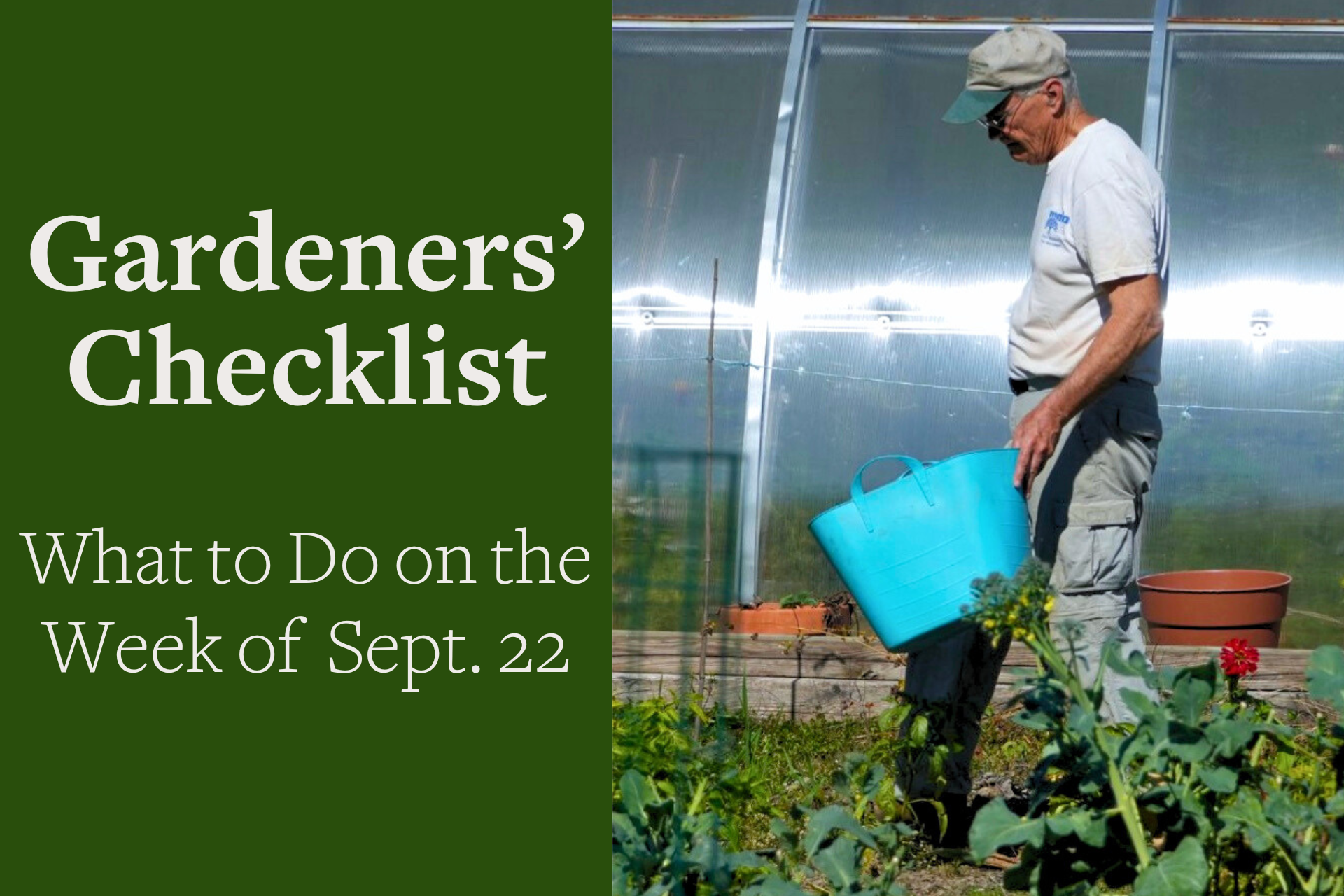You are here
Gardeners Checklist: Here Is What to Do the Week of Sept. 22
Gardeners Checklist: Here Is What to Do the Week of Sept. 22
by Ron Kujawski
* Seed new lawns or reseed bare spots in lawns this week, or forget about it until early next spring. The window for seeding lawns will slam shut this weekend. However, laying sod to repair damaged lawns can be done for several more weeks, perhaps to the end of October if mild weather persists through early fall.
* Plant snowdrops, crocuses, and winter aconites as soon after purchasing as possible since the bulbs tend to dry out rapidly. This is true of most so-called minor bulbs.
* Add two tablespoons of bottled lemon juice per quart or one tablespoon per pint when canning tomatoes. The acidity of tomatoes decreases as they mature; adding extra acidity from lemon juice should eliminate potential problems with the bacteria that causes botulism. For more information on food preservation, go to the website of the National Center for Home Food Preservation: http://nchfp.uga.edu/
* Harvest Brussels sprouts by breaking or cutting off the larger sprouts, starting from the lower portions of the stem as needed. Some gardeners like to pinch out the growing tip of Brussels sprouts to get more evenly sized sprouts from bottom to top.
* Force Christmas cactus into bloom by providing the plant with an uninterrupted dark period of 14 hours each day until flower buds appear. If you find that difficult, keep the plant in a cool location where nighttime temperatures range from 50 to 55 degrees F.
*
The skill level of a gardener can be measured by the appearance of their flower gardens at this time of year. Plants in gardens of the most-skilled look as fresh as a daisy. Unfortunately, for the less talented among us, daisies may be the only plants that look fresh. Everything else is insect-chewed, disease-marred, or weather-beaten. In case you’re wondering, the daisies in my flower garden look like they are suffering from a severe hangover. Is there anything that can be done to salvage these gardens and embellish our reputations? Perhaps. Start the process by grooming the plants. That means cutting off all spent flowers, except on roses, and all marred foliage. In some cases, that will mean cutting the plants back to ground level. If the plants are annuals, simply yank out the spent plants. At this point, you’re probably left with a lot of empty spaces in the garden. Fill in these spaces with colorful fall mums and ornamental cabbage and kale. They will retain their fresh look well into fall. When shopping, keep in mind that these plants are not likely to grow any larger once set out in the garden; so, buy the appropriately sized plants to meet your needs. For the best look, create mass plantings rather than spotting one here and there. Mums, ornamental cabbage and kale also look great when planted in containers.
Ron Kujawski began gardening at an early age on his family's onion farm in upstate New York. Although now retired, he spent most of his career teaching at the UMass Extension Service. He serves on Berkshire Botanical Garden’s Horticulture Advisory Committee. His book, Week-by-Week Vegetable Gardener’s Handbook, is available here.
Help Our Garden Grow!
Your donation helps us to educate and inspire visitors of all ages on the art and science of gardening and the preservation of our environment.
All donations are 100 percent tax deductible.


